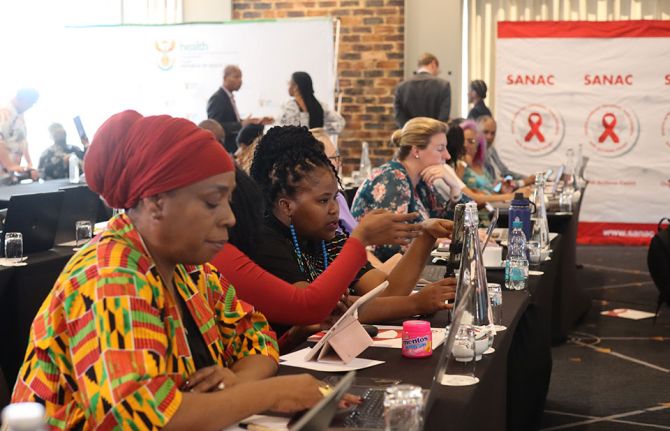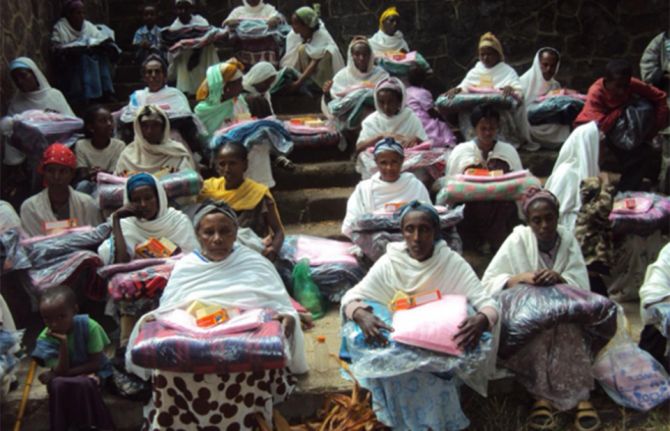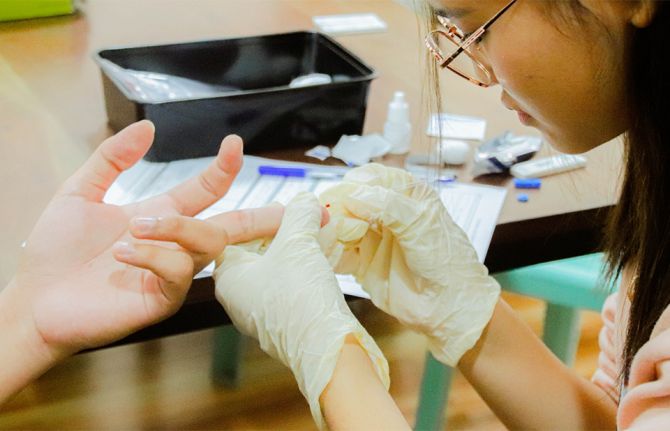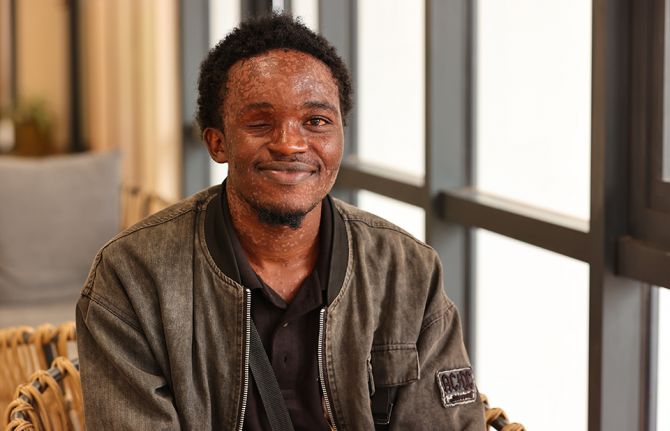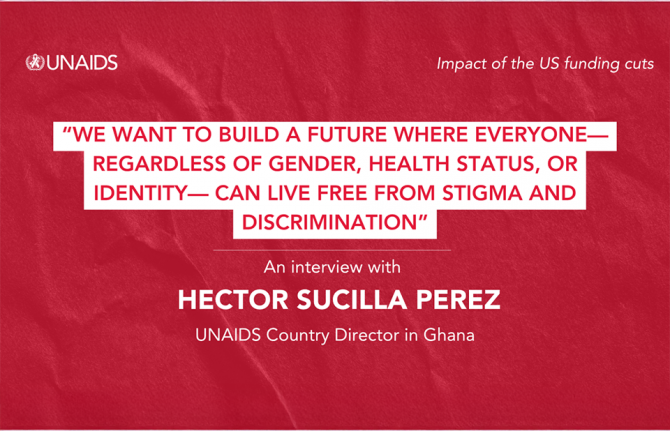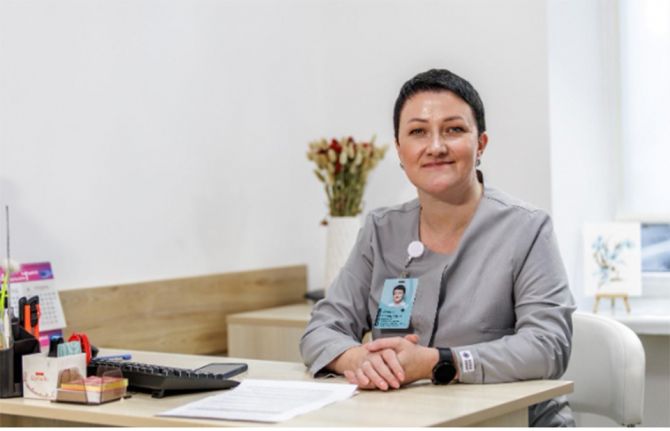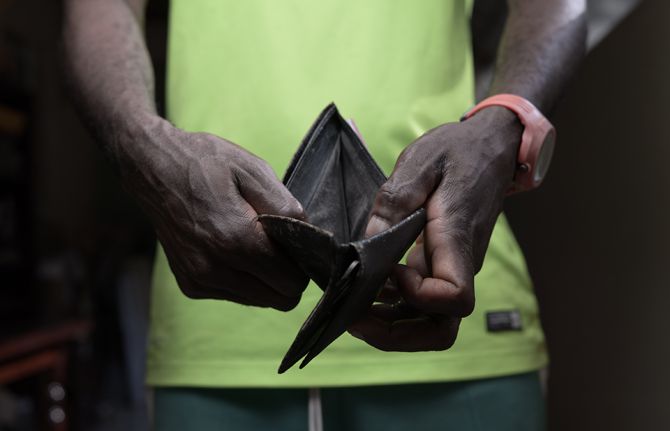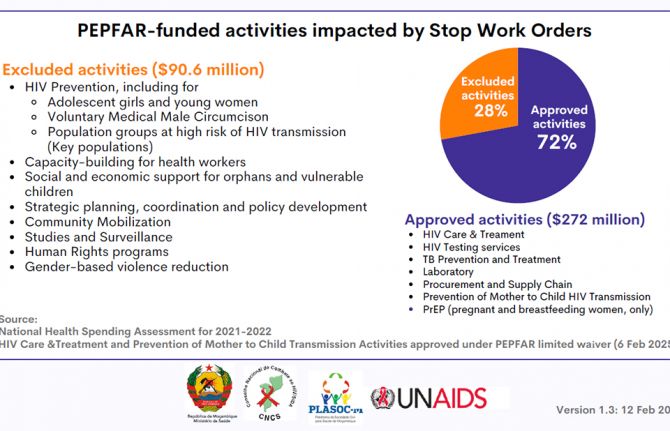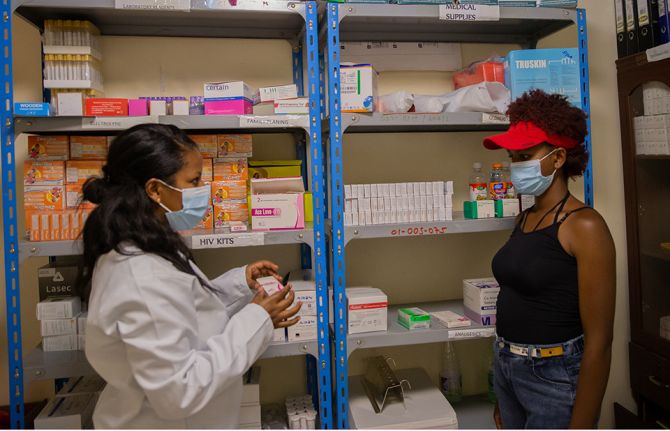
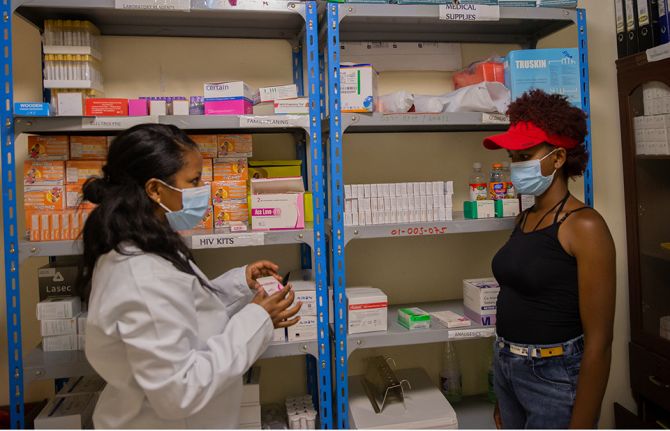
Feature Story
A crisis unfolding: hard-won progress in Ethiopia’s HIV response at risk
13 February 2025
13 February 2025 13 February 2025Ethiopia has made significant progress in its HIV response in recent years and is on track to reach the UNAIDS 95-95-95 targets with 90% of people living with HIV in the country being aware of their HIV status; 94% of those diagnosed with HIV receiving antiretroviral (ARV) therapy; and 96% of people on ARV therapy achieving viral suppression.
But now, that progress is at risk. The recent pause in United States foreign assistance poses a direct threat to the lives and well-being of thousands of people living with HIV in Ethiopia and millions globally. Critical services are grinding to a halt, leaving people who rely on them facing an uncertain and dangerous future.
Ethiopia is heavily reliant on external funding for its AIDS response. PEPFAR provides 53% of HIV funding in the country. In 2023, UNAIDS’ estimates show that there were 610 000 people living with HIV in Ethiopia, 510 000 of whom were accessing antiretroviral treatment.
For women living with HIV, uncertainty is growing. Limited and unclear communication from healthcare providers and policymakers has left them in the dark about treatment changes, medication availability, and service disruptions. With no clear answers, they are forced to rely on rumors, fueling fear and anxiety.
“We don’t know what’s happening. Are services being cut permanently? Will we still get our medication next month? No one is telling us anything,” one woman shared.
To make matters worse, case workers and counsellors—once a vital source of medical and emotional support—are disappearing. These professionals were more than healthcare providers; they were trusted confidants who ensured women received care in a stigma-free environment. Their absence is leaving many feeling abandoned.
“They understood our struggles, checked in on us, and made sure we had what we needed,” another woman explained. “Without them, we feel forgotten.”
As services become increasingly unreliable, distress and fear are taking hold.
Shortages and desperate measures
Funding cuts bring shortages, and for women living with HIV, the fear of running out of medication is overwhelming. Access to antiretroviral therapy (ART) is essential—it keeps people alive. Yet many are already facing supply disruptions, and whispers of medication shortages are spreading panic.
“If I can’t get my medicine, what happens to me?” one woman asked. Women living with HIV who have been healthy for years now fear an uncertain future where their treatment is no longer guaranteed. People living with HIV who do not access antiretroviral therapy will eventually develop AIDS and die. To cope, many have resorted to stockpiling medication, traveling long distances and spending entire days at clinics in hopes of securing extra supplies. While understandable, this survival strategy comes at a heavy cost—disrupting work, family life, and daily routines. No one should have to live in fear of their next refill. The urgent need for stable, uninterrupted HIV treatment cannot be overstated.
Adding to the crisis, shortages extend beyond medication. The dwindling supply of test kits, including viral load tests, is threatening the future of diagnosis and monitoring. These tests are crucial to ensure that people living with HIV maintain undetectable viral levels, reducing transmission risks and protecting their health.
Fears have also been expressed around the availability of medications for HIV prevention, particularly for the prevention of vertical transmission of HIV. If the current pause in the supply of medical resources continues, the availability of these vital medications could be severely compromised, putting the lives of women and children at even greater risk. For women living with HIV who are pregnant, a lack of lifesaving medications for themselves also means their children can be born with HIV even though this is entirely preventable.
Without test kits and prevention measures, undiagnosed and untreated cases could rise dangerously. “We can’t afford to go backward,” one woman said.
A Plea for Action
The voices of these women reveal a stark and urgent reality—funding cuts have left people living with HIV in a state of uncertainty, with no clear path forward.
"Urgent intervention is needed,” stressed Tina Boonto, Country Director for UNAIDS Ethiopia. “UNAIDS is gathering information and developing funding solutions to address the shortfall, with proposals for both the government and external partners to ensure continuity of critical services. We hope Ethiopia's government will step up and lead in covering these essential services. We must act now to safeguard gains that have been made and succeed in securing sustainable support to people living with HIV."
While the future remains uncertain, one thing is clear: without swift action, the hard-won progress in Ethiopia’s HIV response is at risk.
Impact of recent U.S. shifts on the global HIV response
Region/country

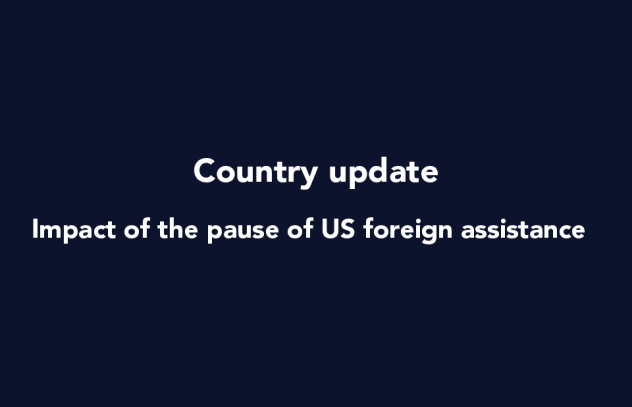
Feature Story
Government ensures continuity of treatment in Malawi
10 February 2025
10 February 2025 10 February 2025There is minimal disruption to HIV services in Malawi. People living with HIV are receiving services. People living with HIV who go to facilities that have been are closed are being referred to government services that are open. Early last week, in response to UNAIDS’ advocacy, the government issued a press release assuring the public that HIV services will continue uninterrupted. Also last week the government developed a contingency plan, which will form Part B of the ongoing work to develop a Sustainability Plan for Malawi. The government issued a circular of the activities it will prioritize going forward. It has redeployed its staff to fill the positions that are vacant because of the stop order. In general services are ongoing.
Unfortunately, PrEP and long-acting injectables are not part of the package the government will prioritize. Civil Society groups are concerned about the omission of prevention interventions beyond treatment and PrEP for pregnant and breastfeed women. UNAIDS is working with other international partners to see if they would be willing to support PrEP and long-acting injectables.
Staff partner reduction
Non-government organisations such as Partners in Hope, Partners in Health, Baylor College, Lighthouse Trust, Pakachere, CEDEP, EGPFAP, Right to Care, JPPHEIGO, MACRO employ more than 4000 cadre of staff in support of the AIDS response using PEPFAR and CDC resources. These cadre include 180 Doctors, 1640 Health Diagnostic Assistants, and 1870 treatment supporters received stop orders and ceased their activities. Some of these NGOs did not receive the Stop Orders but stopped activities as a precaution. They surrendered the work equipment, including computers and vehicles at the district health offices. Civil society organizations including the Malawi AIDS Services Organisation and the Malawi network of people living with HIV work has been impacted. They have stopped or slowed their community-led monitoring work.
Interruptions to Services at Key Populations Drop-In Centres
The drop-in centers for key population are not staffed because most of the staff are PEPFAR or CDC supported, who are not working. The drop-in centres are open but minimally staffed. PLHIV are worried about what will happen when the stocks in country – approximately 9-months-worth – run out. Members of civil society are keen to understand how the government will move Malawi’s response to HIV forward, sustainably. They are also concerned about the continuity of prevention and treatment efforts going on in Global Fund Grant Cycle 7 given that the US government provides the bulk of contributions to the GFATM.
The UN Family Responds Together
The UNCT met to discuss the situation. Beyond HIV, the impact of the Stop Order was widespread including on support for the forthcoming elections, maternal and child health and resettlement of refugees. The UNCT agreed on a series of support and advocacy efforts to move forward including reaching out to the government to find out where they need our support and what austerity measures they will take given the freeze on funding.
Last week, the U.S. Ambassador assured the UNAIDS Country Office that PEPFAR-supported services will recommence early next week. She indicated the country needs to complete the sign the Sustainability Plan.
The UCO met the Minister of Health and reached out to other Senior Government Officials and the Sustainability plan has now been cleared by the Minister of Health. The UCO understands the Sustainability plan and the Contingency Plan are one of the key items that the Minister will share with the President this Friday.
The UCO will continue to meet with the Minister of Health and Ambassadors from other countries, the NAC, and civil society to understand the flow of services in the districts and see how best we can support.
Region/country
Related


Feature Story
Government mitigation measures in Cameroon
09 February 2025
09 February 2025 09 February 2025The Ministry of Health in Cameroon has developed a set of mitigation measures to ensure continuity of HIV services to people living with HIV and vulnerable populations that could be impacted by the suspension of Unites States Government funding. The mitigation measures describe immediate, medium and long-term actions that also represent an accelerated move towards sustainability.
The minister has issued a circular to all regional delegates and directors of hospitals to take appropriate measures within their authority to ensure continuation of HIV, TB and Malaria services with priority given to the most vulnerable, these include reallocation of health personnel and readjusting of workload to fill the gaps of the 2332 personnel that were under PEPFAR funding. The objective is to ensure that there would be no interruption of services to anyone. Talks are ongoing with the Global Fund country team and other partners to find possibilities of reallocation of resources.
Region/country
Related


Feature Story
Impacts of U.S. pause of foreign assistance on global AIDS programmes in Kenya
09 February 2025
09 February 2025 09 February 2025Overall National Response
A Cabinet memo on the current situation and recommendations for the government of Kenya (GOK) to mitigate the situation has been developed by Ministry of Health and domestic resource allocation is a key recommendation as well as fast-tracking the development of the ongoing HIV sustainability roadmap.
A special national HIV inter coordination committee (ICC) that includes CSOs, communities, private sector, UN Agencies and government stakeholders was convened by UNSDCC on Friday, January 31st to assess the impact and suggest solutions.
Commodity Security
UNAIDS’ Country Office (UCO) has been part of the commodity security meetings.
All requests to distribute PEPFAR-supported products in country through USAID are on hold until further guidance is provided to unfreeze the initial communication.
Products that were to be distributed in January 2025 under USAID/PEPFAR include ARVs (Nevirapine syrup, Dolutegravir 10 mg and 50 mg). For these products, health facilities had a stock balance between 2 to 4 months by 31st December 2025.
The country may start experiencing erratic supply of Nevirapine syrup and Dolutegravir (DTG) 50 mg towards the end of March and May 2025, respectively, if the stop work order is not lifted.
The current stocks at Kenya Medical Supplies Authority (KEMSA) for DTG 10 mg will sustain the country beyond June 2025.
Viral load and EID products are mainly procured through PEPFAR support. This will be adversely affected if the stop order is not lifted as soon as possible as the quantity under the Global Fund is minimal, targeting specific point of care testing sites.
Stop Gap Measures for Commodity Security
GOK will be required to allocate funds for the distribution of these products from Missions for Essential Drugs and Supplies (MEDS) to health facilities. The estimated cost by KEMSA is approximately USD 10 million.
Procurement and delivery of health products will be facilitated by the Global Fund and government counterpart financing. Additionally, discussion to front load commodities under Global Fund year two will be initiated.
If the stop order continues, GOK will be required to allocate funds to cover the deficit.
Discussions to allow Government to distribute HIV commodities under MEDS is to be initiated if the stop work order is not lifted. (To note, as of February 2, 2025, there has been a reprieve with the new circular on waiver for administration costs for procurement and supplies of essential drugs. The circular is however yet to be implemented as it is a new directive)
Human Resources for Health
All PEPFAR-supported medical personnel/health workers have been requested to stop work as per the stop work order effected in PEPFAR supported counties and facilities.
All PEPFAR-supported implementing partners (CSOs, FBOs, UN) and sub-grantees have been requested to stop work and consequently, staff have been requested to proceed on leave for the duration of the stop work order (90 days).
In some of the counties, the county government has recalled all health workers who are on leave to cushion the situation.
UCO programs supported by PEPFAR through COAG (Community led monitoring and Strategic Information) have been halted.
Consequently, the five UCO CLM partners (CSOs, KP led organizations) have stopped work and over 148 staff IP staff have been affected, and service delivery constrained.
Way Forward
UCO to consider supporting a national communities’ meeting to discuss the impact on service delivery and make recommendations to national and county governments.
As mentioned above, as of February 2, 2025, there was a reprieve with the new circular on waiver for administration costs for procurement and supplies of essential drugs, including continued support for human resources. Hopefully, measures will be implemented this coming week to avert potential risks.
Region/country
Related


Feature Story
Impacts of U.S. pause of foreign assistance on global AIDS programmes in Botswana
09 February 2025
09 February 2025 09 February 2025Funding for the HIV Response in Botswana
Prior to the U.S pause of foreign assistance, the Government of Botswana funded two thirds of its HIV response (approximately US$ 90 - 95 M). The remaining costs were covered by the U.S. Government (US$ 55 M via the U.S. President’s Emergency Plan for AIDS Relief, PEPFAR, and US$ 12M via the Global Fund to Fight AIDS, Tuberculosis and Malaria).
Immediate Risks
The pause and stop order will:
- Undermine Botswana’s ability to fully achieve UNAIDS’ 95-95-95 targets and the efforts to finding the missing 5-2-2 in Botswana. That means reaching an additional five percent of all people living with HIV with testing so they are aware of their HIV status; ensuring that an additional two percent of all people who are living with HIV and are aware on treatment and ensuring an additional two percent of all those aware of their status and on treatment have their viral load suppressed.
- Take away safe spaces for key populations (KPs) and adolescent girls and young women (AGYW) and increase their vulnerability to HIV-related sigma and discrimination, gender-based violence, mental health problems and other related social ills.
- Reduce access to early diagnosis and treatment for HIV which leads to health complications and higher default rates for treatment adherence which correlates to a lack of viral suppression.
Impact on Civil Societies and Communities
In Botswana, the impact of the pause on U.S. foreign assistance and related stop order has already affected delivery of HIV prevention and treatment services by civil society organisations (CSOs) and will have implications for the entire system across the national HIV response.
UNAIDS consulted with a significant number of CSOs to establish the impact of the pause and stop order on the provision of services. Additionally, a task force set up by NAHPA and the Ministry of Health and cochaired by UNAIDS met to establish a complete picture of disruptions not just for CSOs but also within MOH and NAHPA where a total of about 207 positions are funded by PEPFAR.
Most of the affected CSOs are those providing some services for key and vulnerable populations (AGYW, MSM, SW, PLWHIV). The government continues to provide services and encourages the affected CSOs to refer and link clients to government facilities. While CSOs have been funded to provide demand creation activities, only three of those consulted have clinics or drop-in centres that were considered safe by the aforementioned population groups. They offer HIV counselling and testing Services, ART dispensing, PrEP dispensing, adherence and psychosocial support, condom distribution and referral and linkages to other services. The stop order has led to the closure of these CSO clinics and drop-in centres and disrupted service delivery.
Government Response
Botswana’s government health facilities continue to operate and provide services. The Ministry of Health issued a press release on 29 January assuring Batswana living with HIV that the pause of U.S. assistance will not affect the availability of ARVs as they are directly procured by the Government of Botswana. This was followed by another press release on 6 February further assuring continuity of services.
Mitigation Measures
Through the Joint Oversight Committee, a task team will be established to monitor developments and ensure that HIV services are not disrupted, clients are referred and linked to care at government facilities and that CSO’s providing services will receive domestic funding.
Consultative meetings between stakeholders are ongoing as per the Ministry of Health’s press release.
Region/country
Related


Feature Story
Impact of the pause of U.S. foreign assistance in Ethiopia
06 February 2025
06 February 2025 06 February 2025The pause of U.S. foreign assistance on Ethiopia will affect many areas of development, however its impact on Ethiopia’s national HIV response is particularly severe.
Ethiopia is on track to reach the global 95-95-95 targets: with 90% of people in Ethiopia living with HIV being aware of their HIV status; 94% of those diagnosed with HIV receiving antiretroviral (ARV) therapy; and 96% of people on ARV therapy achieving viral suppression. ARV treatment is currently provided to 503,000 people via 1,400 health facilities across the country. However, with ongoing challenges to the country health system and socio-economic development, Ethiopia remains reliant on external donors for its HIV response.
SERVICE DISRUPTION: Pause of U.S. assistance to community programs and drop in centres serving women, young girls and priority populations at higher risk of HIV infection means tens of thousands of individuals will no longer be able to access critical services such as HIV testing, antiretroviral treatment, pre-exposure prophylaxis (PrEP) for HIV prevention, and screenings for tuberculosis, sexually transmitted infections and support to address gender-based violence. The closure of many drop -in centres and the termination of outreach workers’ and peer educators’ contracts will effectively shut off support to vulnerable groups.
Table: Breakdown of Service Disruption in three regions in Ethiopia: Addis Ababa; Oromia and Gambella
| Number of people | Type of service |
| 2,385 | People will not be able to continue to access ARV treatment; TB treatment; STI treatment |
| 18,075 | People will no longer receive support for health and care services (differentiated service that facilitates easier access to health care providers) |
| 14,811 | People will not be encouraged and supported to access HIV testing (key to the success of HIV programmes is people knowing their status and starting treatment early) |
| 879 | People will stop accessing pre-exposure prophylaxis to prevention new HIV infections (PrEP) |
| 100 | People will stop the pilot programme for the new simplified, twice annual injectable PrEP |
| 235,560 | People will no longer receive condoms to prevent new HIV infections and sexually transmitted infections. |
SUPPLY CHAIN DISRUPTIONS: The funding freeze has caused critical delays in the supply of essential HIV services, including testing kits and other resources. Notably, PEPFAR is responsible for 100% of the procurement of viral load and Early Infant Diagnosis (EID) reagents. The interruption in funding is limiting the availability of these crucial supplies, undermining the program’s ability to conduct timely viral load and EID testing, which are essential for effective patient monitoring and treatment.
REDUCED CAPACITY FOR HEALTHCARE SUPPORT: The pause threatens to stall efforts to build local healthcare capacity. It impacts the training and support of health workers, slowing progress in Ethiopia’s fight against HIV. This reduction in capacity limits the ability of healthcare professionals to respond effectively to the growing HIV epidemic. The disruption of ICAP’s capacity building, M&E, and clinical mentoring threatens care for advanced HIV patients, putting Ethiopia’s progress at risk. The freeze is also likely to scale back key prevention programs, including outreach, education, and services for key populations, worsening the epidemic
HEALTH INFORMATION SYSTEM DISRUPTION: Ethiopia's Health Information System is severely affected by the stop work order. The termination of 10,000 data clerks, who are essential for entering ART data into the health information management system, is compromising data management, particularly in tracking lost-to-follow-up cases. This disrupts key national activities, such as HIV estimations and studies of key populations. Furthermore, the cessation of the HIV surveys and surveillances, and HIV Estimation Technical Working Group (TWG) which includes CDC, USAID, and PEPFAR undermines the accuracy of HIV data and threatens the continuity of critical HIV data management systems.
HUMAN RESOURCES IMPACT: Ministry of Health shared that 5,000 public health workers’ contracts funded by U.S. assistance from all regions in Ethiopia have been terminated. These health workers are supporting Ethiopia’s HIV response – improving regional capacity to accelerate progress towards Ending AIDS. While the government of Ethiopia will take over the gap, the sudden loss of programmatic experience and the transition period will be rough.
ACTIONS TO ADDRESS THE SITUATION: On 4 February 2025, The Ministry of Health of Ethiopia issued a circular to all regional health bureau to assure regional health offices that the government will step in to manage the work that was performed by the US-funded personnel in order to ensure programme continuity.
UNAIDS Ethiopia together with WHO will be convening a situation assessment briefing on 11 February 2025 with government, CSOs and development partners to identify solutions to address gaps in the HIV, TB, Malaria and health andcCommunity systems responses in Ethiopia.
Region/country

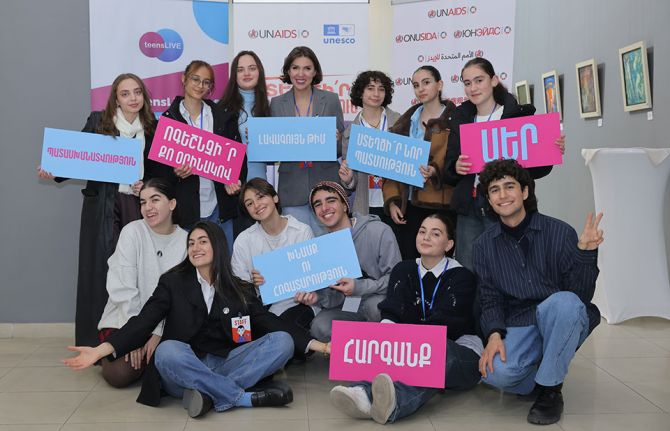
Feature Story
Promoting positive masculinity to end gender-based violence in Armenia
09 January 2025
09 January 2025 09 January 2025A new initiative in Armenia is redefining perceptions of gender roles to end gender-based violence in the country.
Gender-based violence remains a significant challenge in Armenia. Deeply rooted in societal norms and cultural attitudes, it disproportionately impacts women and girls, especially from marginalized and vulnerable groups, increasing their risk to HIV infection and reducing their ability to access HIV prevention and treatment services.
A recent study on perceptions of violence in Armenia, done with support from the European Union showed that, over the past year, more than 80% of women living with HIV or from other key populations reported experiencing violence from a spouse or partner. And a 2023 Gender Assessment report, supported by UNAIDS, stressed the prevalence of gender-based violence in Armenia and underscored the urgent need for actions to address harmful gender norms.
Addressing this issue requires a multifaceted societal effort, including legislation, policies, and cultural shifts. However, a critical component is redefining perceptions of gender roles and masculinity, starting at a young age. To that end, UNESCO and UNAIDS, with support from the Government of the Grand Duchy of Luxembourg launched The Joint Positive Masculinity Project. Addressed to young men aged 16–25, the initiative aimed to foster healthier attitudes toward masculinity, advancing gender equality and reducing violence.
The initiative used diverse and engaging digital content that resonate with young people, including articles, comics, and partnerships with influential local figures like sportsman Levon Hovhannisyan and actor Boris Melqonyan. These collaborations amplified the campaign’s message, sparking critical conversations about redefining masculinity.
A centerpiece of the initiative was a digital masculinity test, designed to challenge traditional views and encourage healthier attitudes. Nearly 2,000 young men participated, providing valuable insights. For example, harmful environments such as bullying, family violence, and misinformation were identified as key contributors to toxic masculinity, with 76.5% of respondents linking these factors to aggressive behavior and unhealthy gender norms.
Personal relationships with family and friends were shown to be the most influential in shaping positive masculinity, demonstrating the importance of interpersonal connections in fostering healthier attitudes.
Participants increasingly rejected harmful traits such as aggression and superiority over women, instead valuing emotional intelligence, care for others, and non-violence.
“The campaign sparked a crucial dialogue among Armenian boys and young men, empowering them to embrace a more inclusive and emotionally intelligent form of masculinity,” said Elena Kiryushina, UNAIDS Gender and Youth officer for the Eastern Europe and central Asia region. “The test results underscore the importance of addressing toxic behaviours in both media and social environments and demonstrate the potential for positive change.”
Through the project’s digital platform, young men openly discussed healthier masculinity, explored ways to manage stress, sought mental health support, and embraced non-violent behaviors. These efforts represent a significant shift toward creating healthier, more equitable gender dynamics.
The campaign achieved over 840,000 impressions across Instagram, Facebook, TikTok, and Telegram, far exceeding its initial targets and signaling a strong appetite for change among Armenian youth.
The campaign aligns with recent amendments to Armenia’s 2017 domestic violence law, which provide a more supportive environment for addressing harmful gender norms. By engaging adolescent boys and young men as agents of positive change, the project challenges entrenched stereotypes and promotes respectful, equitable relationships.
Ekaterina Samolygo, UNESCO IITE Project Coordinator, emphasized, “Gender equality is a fundamental human rights issue and a precondition for sustainable, people-centered development. This initiative is a significant step toward transforming unhealthy beliefs, attitudes, and behaviors to ensure gender equality.”
By empowering young men to redefine masculinity, the initiative lays the groundwork for a healthier, more equitable future for Armenia—one where respect, empathy, and gender equality flourish.
Region/country
Related

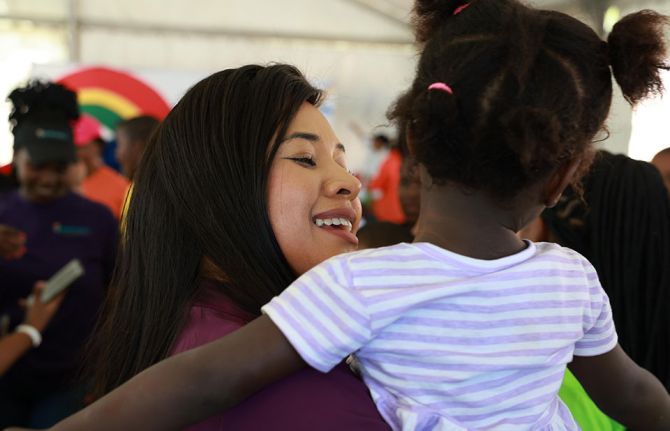
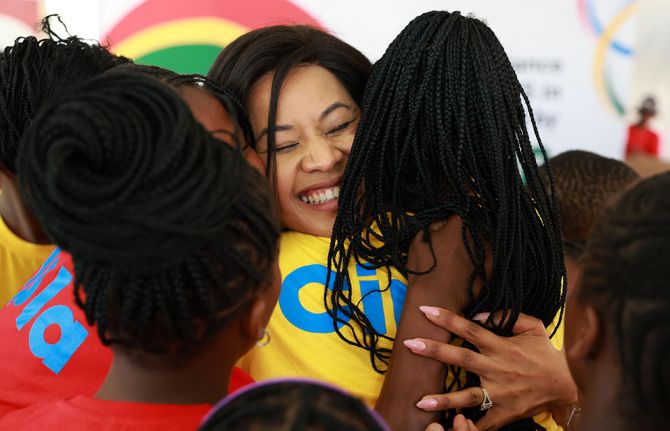
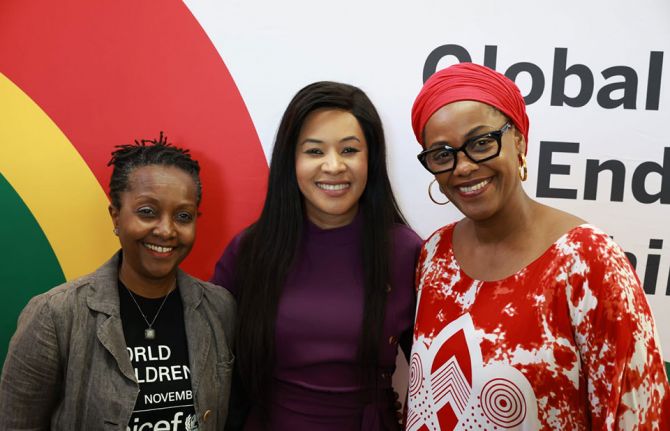
Feature Story
Efforts to end AIDS in children receive major boost with the launch of the first provincial chapter of the Global Alliance in Eastern Cape Province, South Africa
23 December 2024
23 December 2024 23 December 2024South Africa’s fight to end AIDS in children has received a major boost with the launch of the first provincial Global Alliance chapter in the Eastern Cape province. The Global Alliance is driving a global agenda to end AIDS in children by 2030 together with UNAIDS, the Joint United Nations Programme responsible for the global HIV and AIDS response, with a commitment to ensure that all children who are already living with HIV are on lifesaving treatment to live long and healthy lives and to prevent new HIV infections in newborns.
South Africa has one of the highest number of people living with HIV in the world, with approximately 7,7 million people living with HIV and about 150,000 children below 15 years living with HIV. The Eastern Cape province accounted for 24,856 children (aged 0-14 years) living with HIV in 2023. Of these, 1,360 children were newly infected with HIV during the same period. There were 255 children who died of AIDS-related illnesses during the same period.
The Eastern Cape provincial chapter of the Global Alliance was launched at the Masizakhe Children’s home in Mdantsane on 30 November 2024 by the spouse of the Deputy President of South Africa, who is also the patron of the Global Alliance, Mrs Humile Mashatile. She said that it was crucial for the country to accelerate the fight against AIDS to end the AIDS epidemic, including vertical transmission of HIV – for breastfeeding mothers who are living with HIV – and ensuring that people who are not receiving antiretroviral treatment are initiated on it. The patron further called on the government and stakeholders to support the Global Alliance’s work in the province, including ensuring that no child who needs treatment is left behind, including children in remote areas of the country where access to health facilities is often difficult.
“While the Global Alliance activities are focused on health facilities, their success requires the collective effort of all sectors. I call upon all managers across all government departments, civil society leaders and the community-led organizations to adopt these shared values. This should be carried out with an understanding that it is about children’s future,” said Mrs Mashatile. “As we officially launch the Eastern Cape Chapter of the Global Alliance, let us work together to end AIDS in children who will grow up to be healthy and smart leaders of the future.”
Mrs Mashatile also urged leaders to tackle inequalities, including transactional relationships and “ukuthwala”, the practice that involves forced marriage of young girls to older men, as some of the issues that are fuelling new HIV infections in children. Deputy President Paul Mashatile led the pledge against gender-based violence during the national World AIDS Day commemoration event in Mdantsane on 1 December.
The United Nations Children’s Fund (UNICEF) Representative in South Africa, Christine Muhigana, said that progress to end AIDS in children in South Africa needs to be fast-tracked.
“As we conclude the commemoration of 30 years of democracy, we acknowledge the remarkable strides of this country in addressing the AIDS pandemic with South Africa implementing the largest HIV programme in the world," said Christine Muhigana, UNICEF Representative in South Africa.
Eastern Cape Premier, Oscar Mabuyane affirmed the provincial government’s support for the Global Alliance Chapter launch in the province. He said that the province was committed to ending AIDS by 2030 as a public health threat.
“The Global Alliance Eastern Cape chapter envisions a future where every child grows free from HIV with equal opportunities by scaling up evidence-based interventions and community engagement leveraging the multisectoral responses and commitment,” said Oscar Mabuyane, Eastern Cape Premier. “Eastern Cape seeks to halt new HIV transmissions by 2030.”
Globally, UNAIDS reported that the AIDS epidemic is at a crossroads. According to Eva Kiwango, UNAIDS Country Director for South Africa, it is “important to prioritize the right to health of children living with HIV by ensuring that they receive the lifesaving antiretroviral treatment to end AIDS as a public health threat.”
Efforts to end AIDS in children combine the work of both government, civil society, community-led organizations and pharmaceutical firms that produce HIV treatment. According to Simo Masondo, Head of Government Affairs and Trade Development at multinational pharmaceutical company, CIPLA, the firm would continue to work with the government of South Africa to end AIDS through the production of antiretroviral treatment, including treatment for children. Masondo said that CIPLA was committed to equitable access of treatment for all.
UNAIDS Focus area


Feature Story
UNAIDS - partnerships for country led and country owned data system: A transformative approach
23 December 2024
23 December 2024 23 December 2024There is an urgent need to address inequities in global health practices, including how data are collected and used. In the case of HIV data, UNAIDS has consistently strived to strengthen partnerships with countries to support them in their data journeys, from collecting to using HIV data.
UNAIDS’ approach to data systems is different than other global organizations. UNAIDS engages with countries to strengthen their information systems, conduct data reviews and use data to steer the HIV response. UNAIDS facilitates strong collaboration across all stakeholders in the country including bringing different voices to the data reviews, linking the reporting process with capacity strengthening, and finally ensuring that countries lead and come to consensus on one set of data.
The strength of the UNAIDS approach comes from our country and regional presence that ensures UNAIDS support through each step of the process, from data quality control to dissemination and knowledge translation.
This process starts with in-country data quality reviews, followed by training and continued support throughout the process. UNAIDS regularly convenes epidemiologists and data experts and other national stakeholders in regional workshops to share the latest tool and skills to contribute into national capacity to better understand their HIV epidemics and to use the data to guide more effective and efficient national HIV responses to close the inequities. This participatory approach helps countries to develop a harmonized and better understanding of their HIV epidemics and interpret and apply the data more effectively for HIV programming.
“Supporting countries to gather the most accurate picture of their national epidemic in a granular manner is a strategic priority for UNAIDS, national partners and donors.” said Angeli Achrekar, UNAIDS Deputy Executive Director, Programmes. “We firmly believe that working together in this partnership, with countries in the lead, and experts, partners and communities at the table we deliver more impactful results.”
A total of nine regional estimates workshops takes place as part of this round of training, running from December 2024 to February 2025. The first two workshop were held from 2-13 December in Johannesburg, South Africa where epidemiologists, HIV data managers, and other partners reviewed their programme data and found areas for improvement, and updated their modelled estimates of HIV incidence, mortality and measured progress toward the 95-95-95 targets for 2025 at national and sub-national levels. The models are a way of triangulating programme data, surveillance data, survey results, and underlying demographic data into a consistent understanding of the trends in the epidemic.
This collaborative, workshop process concludes with each country developing a comprehensive and nuanced summary of their epidemics, including having detailed information about the inequalities that persist over time. The models also allow countries to make projections to guide more targeted responses into the future informing their Sustainability Roadmaps effort using state-of-the-art modelling tools.
In countries with UNAIDS strategic information advisors, they support national counterparts in leading the estimates work year-round, together with other international partners such as the Global Fund to Fight AIDS, Tuberculosis and Malaria, US Government, UNICEF and WHO. This ensures the annual estimates are derived from the best possible data and fully owned by countries and partners.
Similarly, it ensures that all stakeholders in the country agree on one set of estimates for planning and reporting. It is this continuous support that ensures countries are equipped to lead their data initiatives effectively. Furthermore, this participatory approach enables countries not only to be data contributors but to lead in interpreting and applying the data.
In addition to having a greater clarity on the expected course of their national epidemics, countries are able to plan their responses and develop a detailed annual report on their epidemics. This data is used by national governments, major partners like PEPFAR, the Global Fund to Fight AIDS, Tuberculosis and Malaria and community networks to develop more effective and efficient response plans based on the latest information on the course of the epidemic. UNAIDS also compiles and publishes these data, once validated, through its annual Global AIDS Update report and on AIDSinfo, the UNAIDS online data dissemination platform.
In the past two decades, UNAIDS has transformed the approach to global health data from extractive top-down models with minimal country input to inclusive, equitable, and collaborative processes. This approach shifts the power back to countries, prioritizes national ownership, partnership, transparency, and capacity, ensuring that countries are leading in using and interpreting their data—with support from UNAIDS and other development partners.
A suite of tools has been developed to help countries produce more accurate data. These tools are free, widely distributed, and used by epidemiologists across more than 170 countries, promoting equitable access to high-quality methodologies. To foster transparency, the methodology, assumptions, and parameters of the models and tools are published in open access journals and expert deliberations are posted at www.epidem.org.

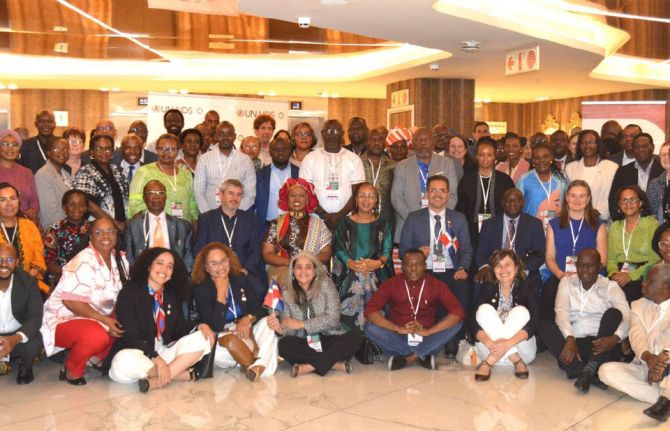
Feature Story
Building country-led sustainable HIV responses
20 December 2024
20 December 2024 20 December 2024What does the HIV response look like beyond the 2030 targets to end AIDS? For the past year, UNAIDS has been working with partners and over 30 countries to develop country-led roadmaps for the sustainability of HIV prevention, treatment and care services far into the future.
Part of the sustainability journey includes reaching the global goal of ending AIDS in the next five years. According to a recent World Bank report, despite an early COVID-19 spending peak, per capita government health spending has steadily declined in low- and lower middle-income countries. Urgent action is needed in many countries to ensure reaching the health Sustainable Development Goals remains possible by 2030.
UNAIDS’s new sustainability approach, developed jointly with the US President’s Emergency Plan for AIDS Relief (PEPFAR) and the Global Fund to Fight AIDS, Tuberculosis and Malaria (GF) in early 2024, focuses on five core areas. These are political leadership and commitment; enabling laws and policies; sustainable and equitable financing; science-driven, effective and high-impact HIV services and solutions; and systems built to deliver. The specific methods look different in each country, but all have equity and communities at the center.
“A multi-sectoral approach remains critical to the HIV response particularly in this last mile as we accelerate prevention and close gaps that require us to address the complex inequalities that persist,” said Anne Githuku-Shongwe at UNAIDS.
As part of this initiative, UNAIDS and partners are supporting countries to create and implement sustainability roadmaps. The roadmaps identify key changes countries can take to shift towards self-reliant, efficient and impactful HIV responses both in the short- and long-term.
Representatives from 22 countries in Sub-Saharan Africa and the Dominican Republic gathered recently in Johannesburg, South Africa to hone their roadmaps during a workshop hosted in October by The South African National AIDS Council in collaboration with UNAIDS, PEPFAR and the GF.
“While it is valuable that we come together to learn and share insights, it is crucial to recognize the level of responsibility each of us carries in our respective countries. We are not here simply to exchange ideas, but to take on a leadership role in driving meaningful change,” said Thembisile Xulu of the South African National AIDS Council as she addressed the participants.
During the workshop, countries shared experiences and learned from each other about their individual sustainability journeys. In addition, countries agreed to establish a virtual peer learning network to facilitate future cross-border partnerships and share successes and challenges in moving towards sustainability. Some of the findings so far along the journey include the necessity of high-level political support, coordinated multi-sectoral efforts and diversified funding sources.
Furthermore, countries recommended that development partners craft consistent messages about their ongoing commitment levels to fund HIV and health services. The need for transparent, responsible and inclusive conversations was emphasized by all in Johannesburg when discussing the transition from donor financed to country financed responses.
“The fiscal space for HIV is tightening, and we need to be pragmatic as we work to sustain the response with a focus on simplification and efficiency,” said Sarah Dominis from the U.S. State Department Bureau of Global Health Security and Diplomacy, Office of Financial and Programmatic Stability. “The future HIV response will be led by country governments in partnership with community and private sector partners. PEPFAR is not going away but will focus on supporting countries to sustain the HIV response, aligning to the vision they have committed to in their roadmaps.”
As the roadmaps roll out publicly, governments are recognizing the role of communities in the long-term response. For example, Tanzania’s roadmap identifies that community-led organizations play a pivotal role in community mobilisation, facilitating social and behaviour change, addressing social/cultural norms, primary HIV prevention interventions, adherence to antiretroviral treatment and retention in care. As a result, the roadmap lists actions to bolster communities, such as scaling up the network of community health workers and reinforcing community-led monitoring programs.
“When we talk about HIV sustainability we need to go back to the basics. It's about planning around the lives of PLHIV. Communities are always at the centre of service delivery, demand creation and monitoring. There is the opportunity for us all to tap into the infrastructure and willingness of communities to provide treatment and prevention services - through strong sustainable partnerships,” said Sibongile Nkosi from The Global Network of People Living with HIV.
This past World AIDS Day, ten countries launched their sustainability roadmaps, and more will follow in early 2025. To follow the process, visit: https://sustainability.unaids.org/

